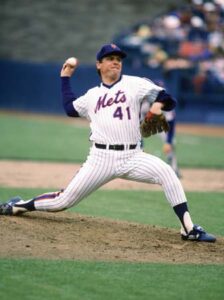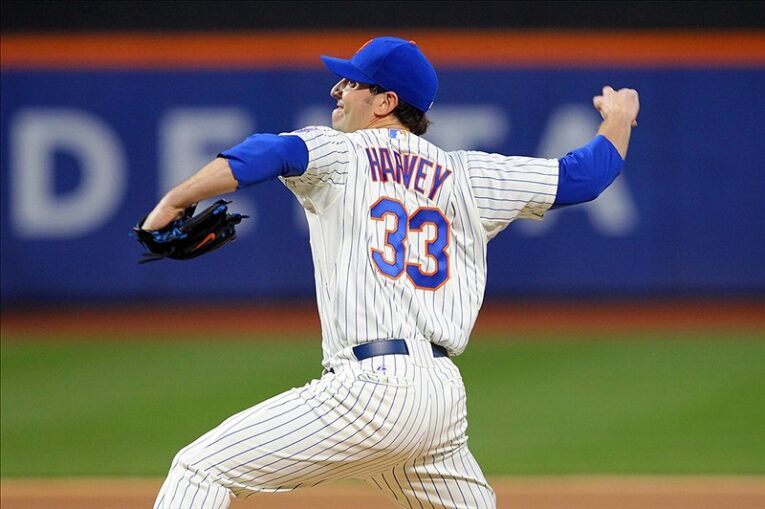One of my greatest wishes as a relatively young Mets fan is wanting to have seen Tom Seaver pitch.
Sure, I’ve seen the highlight videos and World Series tapes that portrayed his dominance, but it’s still not the same as seeing the best pitcher in Mets’ history actually toe the rubber.
However, albeit still very early, we younger Mets fans are seeing firsthand what it was like when Seaver took the mound in the form of Matt Harvey – just throwing it out there that I was also too young to remember Doc Gooden as well.
Harvey has been dominant this year, and his body of work is very similar to that of Seaver.
Harvey has a slightly bigger build than Seaver when he pitched, but Seaver still fit the mold of a powerful right-hander.
Both have explosive fastballs and aren’t afraid to challenge hitters up in the zone – again going back to at least what I’ve seen from Seaver on the tapes.
Both have at least one good secondary pitch: Seaver mostly a slider and Harvey a curveball, slider and change-up. Harvey already has shown great command of each of these pitches, just like Seaver demonstrated with his slider.
Certainly, the mental approach by each pitcher resembles one another. That “bulldog” mentality if always wanting to win allowed each to experience success very early in their careers – and we naturally hope Harvey’s success continues for plenty more years.
But of all the similarities between the two, the fact that each came up with an inept offensive team is just uncanny.
The Mets really have never been known as an offensive team, but to not somehow scratch together a run when your pitcher is working on a perfect game really is embarrassing. Yes, Hector Santiago threw a very good game Tuesday night for the White Sox, but that’s where you have to dig deep and dent the plate at least once.
I looked at Seaver’s rookie year in 1967 and compared it with the first few months of Harvey’s career. Seaver made 34 starts during his Rookie of the Year campaign and finished with a 16-13 record.
However, he had just a 2.76 ERA, and in those 34 starts, he only gave up four or more runs eight times. He also threw 18 complete games, but we’ll overlook that for now since today’s game is much different than back then – especially when dealing with pitch counts and innings limits.
As for Harvey in 17 career starts, he’s given up four or more runs in a start just once and has a collective 2.07 ERA. Yet his career mark is only 7-5.

Now I don’t want to only point the finger at the offense for a lack of production. There likely were times – albeit few – that the Mets actually scored a comfortable amount of runs for Seaver, and the same will be true for Harvey eventually.
It may not even out fully, but there will be times when Harvey doesn’t have his best stuff and the Mets score enough runs to get him the win.
But just imagine if Seaver and Harvey had any sort of consistent run support. Is it so much for a pitcher to ask his team to score four runs per game? If that was the case for Harvey, he could potentially be 11-1, not to even mention the no-decisions.
Ok, it’s definitely not as cut and dry as that, but what I’m saying here is that it’s just the typical Mets way to have an ace-type pitcher yet not be able to score a single run.
Let’s hope that changes as Harvey continues to progress. Based on what we saw Tuesday night, he may only need one run per game.
Luckily, he’s a decent hitter too, so he should be able to help himself at the plate. Like a typical Little League superstar game, Harvey could pitch a complete game shutout and hit a home run to win the game.
That might be his only chance to consistently pick up wins.















